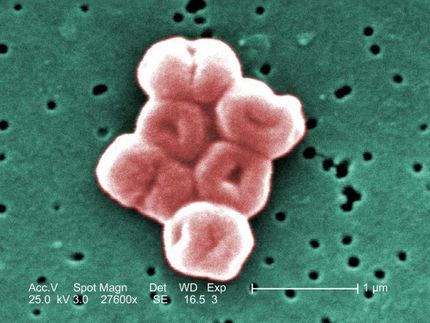Light-activated nanoparticles can supercharge current antibiotics
Advertisement
Light-activated nanoparticles, also known as quantum dots, can provide a crucial boost in effectiveness for antibiotic treatments used to combat drug-resistant superbugs such as E. coli and Salmonella, new University of Colorado Boulder research shows.
Multi-drug resistant pathogens, which evolve their defenses faster than new antibiotic treatments can be developed to treat them, cost the United States an estimated $20 billion in direct healthcare costs and an additional $35 billion in lost productivity in 2013.
CU Boulder researchers, however, were able to re-potentiate existing antibiotics for certain clinical isolate infections by introducing nano-engineered quantum dots, which can be deployed selectively and activated or de-activated using specific wavelengths of light.
Rather than attacking the infecting bacteria conventionally, the dots release superoxide, a chemical species that interferes with the bacteria's metabolic and cellular processes, triggering a fight response that makes it more susceptible to the original antibiotic.
"We've developed a one-two knockout punch," said Prashant Nagpal, an assistant professor in CU Boulder's Department of Chemical and Biological Engineering (CHBE) and the co-lead author of the study. "The bacteria's natural fight reaction [to the dots] actually leaves it more vulnerable."
The findings show that the dots reduced the effective antibiotic resistance of the clinical isolate infections by a factor of 1,000 without producing adverse side effects.
"We are thinking more like the bug," said Anushree Chatterjee, an assistant professor in CHBE and the co-lead author of the study. "This is a novel strategy that plays against the infection's normal strength and catalyzes the antibiotic instead."
While other previous antibiotic treatments have proven too indiscriminate in their attack, the quantum dots have the advantage of being able to work selectively on an intracellular level. Salmonella, for example, can grow and reproduce inside host cells. The dots, however, are small enough to slip inside and help clear the infection from within.
"These super-resistant bugs already exist right now, especially in hospitals," said Nagpal. "It's just a matter of not contracting them. But they are one mutation away from becoming much more widespread infections."
Overall, Chatterjee said, the most important advantage of the quantum dot technology is that it offers clinicians an adaptable multifaceted approach to fighting infections that are already straining the limits of current treatments.
"Disease works much faster than we do," she said. "Medicine needs to evolve as well."
Going forward, the researchers envision quantum dots as a kind of platform technology that can be scaled and modified to combat a wide range of infections and potentially expand to other therapeutic applications.
Original publication
Courtney, Colleen M. and Goodman, Samuel M. and Nagy, Toni A. and Levy, Max and Bhusal, Pallavi and Madinger, Nancy E. and Detweiler, Corrella S. and Nagpal, Prashant and Chatterjee, Anushree; "Potentiating antibiotics in drug-resistant clinical isolates via stimuli-activated superoxide generation"; Science Advances; 2017
























































